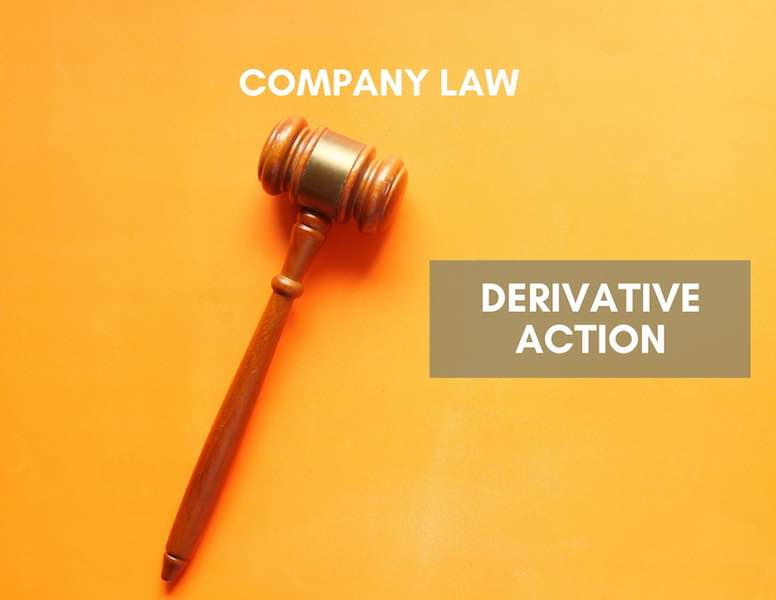The Shareholders’ Derivative Action: An Overview
by Sean Tan Yang Wei and Asha Khoo Sue Ann ~ 26 November 2020


Sean Tan Yang Wei
Email: tyw@thomasphilip.com.my
Introduction
It is well known that a company possesses a distinct legal personality from that of its shareholders. While shareholders hold equity in a company, the operations and management of a company would vest with its board of directors. It is also settled law that the rights of a company can only be enforced by the company alone as set out in the case of Foss v Harbottle (1843) 67 ER 189. However, what happens when a company’s board of directors fails to take the proper steps to protect a company’s rights and interests? How then would shareholders protect their interests within the company from the actions or inactions of the board of directors?
Enter, the shareholder derivative action which refers to an action brought by a shareholder on behalf / in the name of the company. It allows shareholders to take actions on behalf of the company and to enforce any infringement of the company’s rights when the board of directors or the general meeting refuses to do so. Often, these actions are brought in the name of the company in order to remedy the wrongdoings committed by the board of directors of a company or its majority shareholders. Other times, actions could be brought by a shareholder on behalf of the company when a board of directors refuses to pursue or defend actions against other third parties for any harm done to the company.
While the shareholder derivative action has its origin under the common law, the current shareholder derivative action in Malaysia is entirely statutory as Section 347(3) of the Companies Act 2016 has abrogated or repealed the rights of shareholders to bring a derivative action under common law.
Leave to Commence a Derivative Action
Before an action can be commenced in the name of the company, leave must be obtained from the Court in order to do so. Leave applications can usually be made by a member/shareholder of the company, as well as a director of a company. Section 345 of the Companies Act 2016 also allows persons who are entitled to be registered as a member to apply for leave to commence a derivative action.
Prior to commencing a leave application, the applicant, whether a shareholder or director of the company, must give 30 days’ notice in writing to the company’s directors to state his/her intention to apply for leave. This notice requirement is intended to give the board of directors the opportunity to properly consider and decide whether it should commence the action instead (see Section 348(2) of the Companies Act 2016). As such, the written notice ought to contain and / or specify the allegations being made, the reasons for the proposed action, as well as the details of the reliefs being sought in the proposed action to enable the board of directors to consider the same. If there is no response or reply from the board of directors which indicate that they would be commencing the proposed action, then the shareholder or director may file the application for leave to commence a derivative action at the end of the 30-day notice period.
The requirement to give notice to the company is mandatory and the Court has no power provided by Section 348 of the Companies Act 2016 to waive the notice period. Thus, any intending applicant must always bear in mind to ensure that written notice is given to the board of directors before any leave application is brought. Having said that, the Court has the power to allow a shorter notice period where the circumstances of the case require the same. For instance, the High Court in Ng Hoy Keong v Chua Choon Yang & Ors [2010] MLJU 295 allowed an application which was brought only 9 days after the notice was given to the company’s board of directors as the applications were sought to defend an action which needed to be responded to expeditiously.
Factors Considered When Granting Leave – Good Faith and the Company’s Best Interest
In considering whether or not leave should be granted to an applicant, the Court would not examine or delve into the merits of the proposed action. However, the Court would consider primarily whether the applicant was acting in good faith as well as whether its application was, prima facie, being made in the best interest of the company.
1.Whether the Application is in the Best Interests of the Company
The Court of Appeal held in Celcom (M) Bhd v Mohd Shuaib Ishak [2011] 3 MLJ 636 that “the test of good faith is two-fold. One is an honest belief on the part of the applicant, and two, that the application (for leave) was not brought up for a collateral purpose”. The Court must also consider the company’s genuine commercial reasons in deciding not to proceed with the proposed action. Applying this test, the Court of Appeal in Celcom held, among others, that the proposed action to set aside a Mandatory General Offer (MGO) would not be in the best interest of the company as the process of setting aside the MGO would be laborious, costly, complicated, and would adversely impact the credibility and reputation of the company.
Another relevant factor considered by the Court in determining the “best interest of the company” is whether the company stands to receive any commercial or financial gain from the proposed action. The Court of Appeal in Abdul Rahim bin Suleiman & Anor v Faridah bt Md Lazim & Ors [2016] 6 MLJ 449 considered this question and on the facts of the case, allowed an appeal and granted leave to the applicant to commence a derivative action as, among other grounds, the proposed derivative action would allow the company the prospect of recovering around RM12 million in interest income. This potential gain was found by the Court of Appeal to be a positive and beneficial act to the company.
2. Whether the Applicant was Acting in Good Faith
The requirement of good faith stems from the fact that the derivative action was an equitable remedy under the common law. Thus, an applicant for leave must demonstrate that he / she is acting in good faith and / or is coming to court with clean hands.
An example of acting in good faith would be to show that a legitimate claim is being brought in the proposed action and that the legitimate claim is not being pursued by the board of directors of the company. It is essential that the proposed action appears genuine to the Court and is not motivated by personal disputes within the company. Another way to assess this requirement is to consider whether or not the applicant would be among those who would suffer a real and substantive injury if the proposed action was not permitted by the Court (see Swannson v RA Pratt Properties Pty Ltd (2002) 42 ACSR 313, Supreme Court of New South Wales).
However, the fact that the applicants are acting in good faith alone is not enough for the Court to grant leave. Instead, the Court must still weigh all the circumstances and decide whether the proposed action should be pursued in the interest of the company. This balancing exercise can be seen from the case of Pang Yong Hock and Anor v PKS Contracts Services Pte Ltd [2004] 3 SLR 1. In this case, the Singapore Court of Appeal was satisfied that the applicants, who represented half of the directors and shareholders in the company, were acting in good faith as an independent accounting report indicated that there could have been a breach of duties by all the directors. Nevertheless, on balance, the Court found that it would not be in the best interest of the company for leave to be granted as the independent report implicated all of the directors of the company. Allowing one faction to commence an action against the other would only result endless litigation between the factions in the company.
3. Whether the Application Is Made for a Collateral Purpose
An application would not be allowed where it is made for a purpose other than in the best interest of the company. The Supreme Court of New South Wales held in the case of Swannson that a derivative action made by an applicant who seeks “to receive a benefit which, in good conscience, he or she should not receive” would not be made in good faith even if the company stands to benefit if the derivative action is successful. In Swannson, the Court dismissed an application which had the effect of enabling the applicant to receive a double recovery through the proposed action.
Closer to home, the Court of Appeal of Singapore in Ang Thiam Swee v Low Hian Chor [2013] SGCA 11 also dismissed an application for leave where the Court found that the application was motivated almost entirely by ill will and spite. This case involved extensive disputes between 2 founding directors of a company which culminated in one filing an application for leave to commence an action against the other for breaches of directors’ duties. However, the Court found that applicant was only intent on restoring remunerative parity with the opposing director and had conflated a personal claim for to be paid equal directors fees from the company interchangeably with a derivative action against the opposing director for a return of directors fees.
Orders Which Can be Made by the Court in an Application for Leave
If an application is allowed by the Court, then the applicant would be allowed to commence the proposed action for and on behalf of the company. However, the Court retains the discretion to impose various conditions and directions on the conduct of the proposed action pursuant to Section 350 of the Companies Act 2016:
Section 350 – Powers of the Court
In granting leave under this section and sections 347 and 348, the Court may make such other orders as the Court think appropriate including an order –
- Authorizing the complainant or any other person to control the conduct of the proceedings;
- Giving directions for the conduct of the proceedings;
- For any person to provide assistance and information to the complainant, including to allow inspection of the company’s books;
- Requiring the company to pay reasonable legal fees and disbursements incurred by the complainant in connection with the application or action, or pending the grant of the leave or pending the grant of any injunction by the Court hearing the application for leave under this section; or
- The costs of the complainant, the company or any other person for proceedings taken under this secretion, including an order as to indemnity for costs.
For instance, in the case of Teo Gek Luang v Ng Ai Tiong [1999] 1 SLR 434, the Singapore High Court imposed the condition that although leave was granted, the applicant was not to commence the proposed action until after 22 days had passed and if the defendant-director paid the sums due to the company within 14-days. An order that the applicant be indemnified by the company for the costs of the proposed action as the company would benefit from the success of the proposed action can also be made by the Court (Moir v. Wallersteiner and Others (No. 2), [1975] 2 WLR 389).